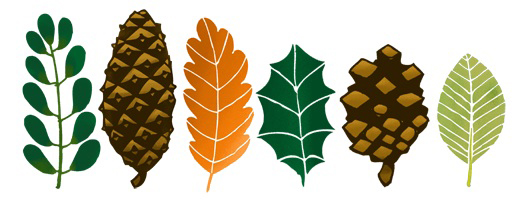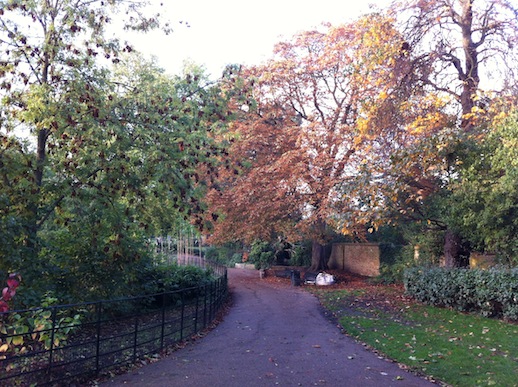 illustration: Matt Sewell
illustration: Matt Sewell
Words by Emma Warren.
This time last year I watched the council pollard all the trees on my street. Today I watch as they coppice a stand of lampposts, pulling the grey 1970s poles and their fog-yellow lights out of the ground with a mechanical cherry-picker. The replacements are tall and black with a spike on top of the light fitting that reminds me of a Prussian Pickelhaube. They emit a harsh white light, which ensure that we’ve moved from diffuse orange evenings to floodlit football pitch.
If only street lighting could evolve or regenerate like the trees. This time last year I scribbled a description of two recent pollards that I could see from my bedroom window. I had no idea what species they were. One particularly caught my eye. It had bark that twisted round to the right like an ill-fitting skirt, and was covered in lumps and bumps including a great swelling half way up that made it look as if it were wearing an apron. The cutters had left a crown of pale branches radiating upwards in a semi-circle, finished flat and harsh at the top.
When the buds came I realised the apron-wearing specimen was a Horse Chestnut. Over the elongated creak of spring it sprouted leaf clothing up and down the entirety of the trunk, and now, in autumn, its tubular dress has turned brown and fizzes with rust and decay. Looking at it now I can just make out the inverted teepee of branches at the top, and a tiny hint of the articulation in the trunk has become visible through the leaf. Autumn is an extended drone, modulating change at glacial pace – and it’s only vaguely visible even when you’ve been looking at a tree pretty much every day for a year.
I’ve noticed the seasonal changes in more detail this time round: the shifting colour palette of my local park, the creeping colour-shift on the frog-leaved tulip tree in Brookmill Park, Deptford, or the signal droop of the walnut tree near the bus stop. The latter is actually huge. It’s as big as the ’60s townhouses it crouches next to like an alternative arboreal dwelling. The pattern, if you were to map it from above, goes like this: houses as big a tree, then a tree as big as a house, then a road crossing, then a charmingly unruly line of yew, lime and horse chestnut until you hit the chippy and the shops. The assumption is that these trees were planted but this is a raggedy parade and I can’t help feel that at least some of them, perhaps the walnut and the tubular yew on the opposite corner, have been here longer than the streets they now survey.
My neighbour Alison shows me a century-old beech round the back of the 1930s houses that definitely predates the dwellings that enclosed it. It’s jack-and-the-bean-stalk high, turning elegantly elephantine in middle age. Nature, as Richard Mabey says so powerfully in Beechcombings, is ‘what happens between human interventions’. And here, it’s what happens around it, too.
